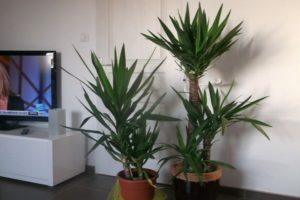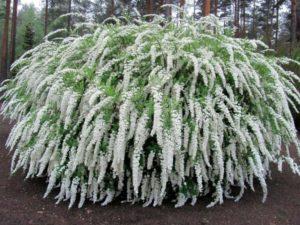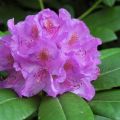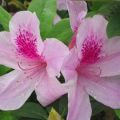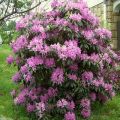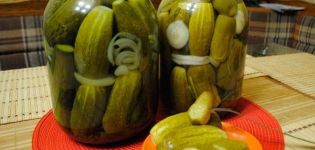Description of the Ledebour rhododendron variety, planting and care, cultivation features
Flowering shrubs are often used for decorative decoration of personal plots and gardens. With the help of such plants, even the most unattractive parts of the garden acquire a fabulous beauty and decorative effect. It is these types of shrubs that the rhododendron of the Ledebour variety belongs to.
Brief definition
Rhododendron Ledebour is an evergreen, frost-hardy shrub with an early flowering period. Most flower growers know the plant as wild rosemary or maral. In its natural environment, the Ledebour rhododendron is found on the slopes of the mountains, coniferous and deciduous forests of the Altai Territory, Mongolia and the Far East, therefore, it is resistant to sudden temperature changes and severe frosts.
Detailed description
The Ledebour rhododendron shrub belongs to the heather family, therefore it has characteristics specific to its type:
- An evergreen plant with straight, upward brown thin branches.
- The height of an adult bush is from 1.5 to 2 meters.
- Young seedlings of bright green color with a lemon tint.
- Green foliage with an olive tint covers the plant tightly. Leaves are small 2-3cm.
- The inflorescences are large. The bloom is vigorous, bright purple flowers with a pink tint cover the bush completely.
- High resistance to frost. In winter, the leaves curl up into a tube, but at the slightest warming, they immediately straighten out.
- The shrub blooms twice a year, in spring and autumn.
Important! Rhododendron Ledebour is a durable plant with excellent decorative qualities. And with proper care, the shrub will become a long-liver in the garden for decades..
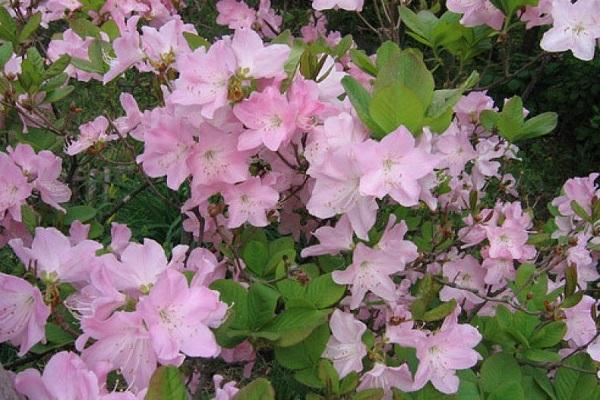
History of origin
This species of wild rosemary was discovered during a scientific expedition to Altai at the end of the 19th century, led by a German botanist. It was in honor of him that the rosemary variety got its name.
Healing properties
Leaves of the plant, which contain a high content of essential oils, amino acids, micro and macro elements, have healing properties. The collection of leaves is carried out during the period of active flowering of the shrub, after which they are dried and used for medicinal purposes.
Infusions and decoctions from Ledebour's rhododendron have anti-inflammatory and bactericidal properties, and also increase the tone and immunity of the body. However, in cattle, goats and sheep, the plant causes severe poisoning.
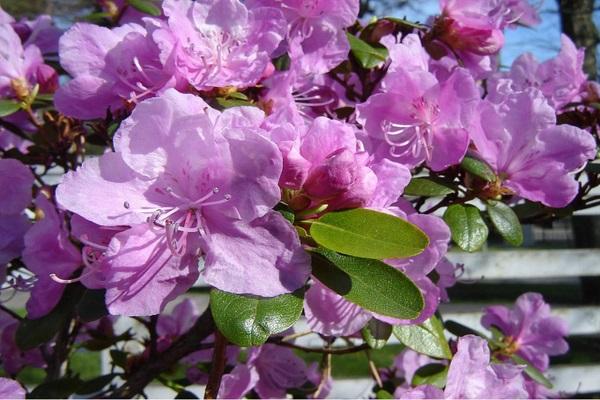
Distinctive features
Based on the harsh conditions of its natural habitat, the shrub has some differences from its counterparts in appearance:
- Rhododendron Ledebour is resistant to severe frost. It easily tolerates winter frosts down to -32 degrees. But during the winter thaws, the plant quickly wakes up, so subsequent frosts can harm the already activated rhododendron.
- Aroma during flowering is possessed not only by the lush inflorescences of the shrub, but also by its succulent leaves. After all, they contain a large amount of essential oil.
Today, there are more than 3 thousand varieties of this plant, but Ledebour's rhododendron is still considered one of the most beautiful shrubs among its relatives.
Growing
The shrub is not picky about care, but there are points that must be considered when growing the Ledebour rhododendron.
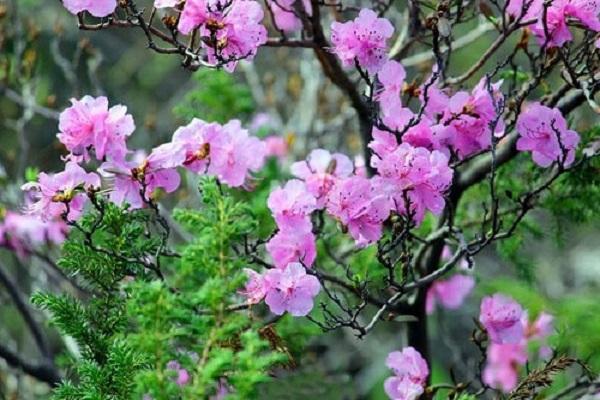
Site and soil selection
For planting Ledebour seedlings in open ground, certain conditions are needed:
- The soil for seedlings is preferably stony, with a high acid content. It is in such a soil that rhododendron grows in its natural environment.
- He does not like winds and drafts, so the site for seedlings must be protected from them.
- For active flowering, the shrub needs sunlight, but the plant does not like direct rays. The land plot for planting a rhododendron should be slightly shaded.
- Plants with a deep equine system are chosen as neighbors of rhododendron. The roots of the shrub are close to the surface, so the same neighbors will become a great obstacle to the growth and development of the shrub.
- The plant grows well and develops on the shores of small bodies of water. It can be a decorative garden pond or a stream.
Important! Large inflorescences require additional sunlight on the plant.
Selection of seedlings and planting dates
Although the rhododendron is distinguished by its viability, the choice of planting material must be carefully and carefully. It is best to buy young seedlings in specialized nurseries or garden centers. There professional consultants will offer really healthy and robust plants.
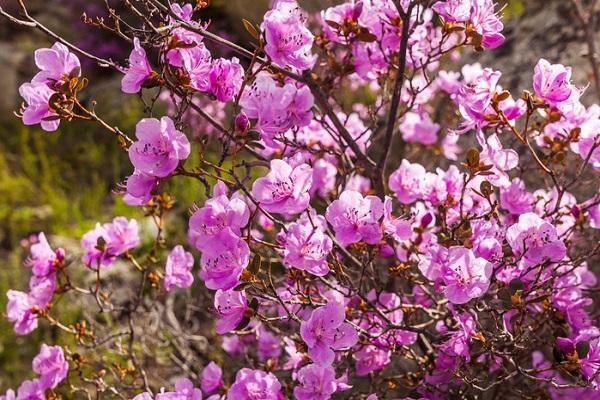
To purchase planting materials at exhibitions, you must have the knowledge of an experienced gardener:
- A 2-3 year old seedling has a large number of dense shoots.
- Leaves without damage or knots. Also, they are free of spots, streaks and irregularities.
- The root system is not overdried, without nodules and damage.
- Low seedlings, 15-20 cm., A guarantee that they were grown in the open field, so the process of planting a young plant will be easier to transfer.
Plants grown in greenhouses are higher, but they get used to open ground more difficult and longer. The shrub is planted on the site in early spring or autumn, the main thing is that the work does not take place during the active flowering phase.
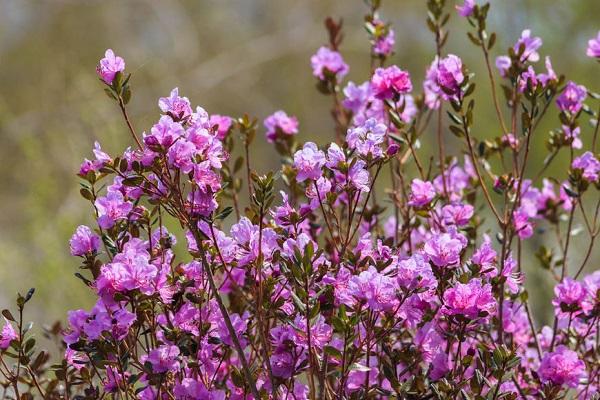
Planting
To plant the Ledebour rhododendron, a hole is pulled out to a depth of 50 cm, 60 cm in diameter, into which peat and clay are laid. Before planting, the seedling must be held in water for 2-3 hours, if the root system is overdried, then the period is increased to 10 hours.
The seedling is inserted into the hole, the root system is neatly laid out and sprinkled with soil mixture. There should be no empty land areas between the roots. The soil around the planted plant is compacted and watered abundantly.
Important! The shrub has thin roots that are close to the soil surface. Therefore, it is advisable to support young plants with supporting pegs before rooting..
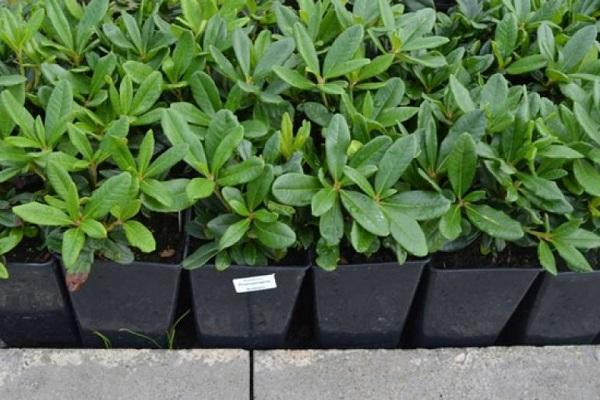
Temperature
The shrub is distinguished by its frost-resistant qualities.He easily survives the winter at -32 degrees. But in extreme heat, rhododendron requires shading and additional moisture. Especially, the temperature regime is important when forming buds. During this period, the most comfortable temperature for the plant will be 15-17 degrees.
Watering
Ledebour's rhododendron is a moisture-loving plant, therefore irrigation work is carried out often. The flowering of a shrub directly depends on its watering. The first sign that the bush lacks moisture is withered, yellowed leaves.
Irrigation works are carried out with settled water. Also, to increase the acids in the soil, a little peat is added to the water. In drought and hot weather, it is advisable to shade the bush and spray it. Active watering of the shrub is necessary from spring to autumn; in the winter season, rhododendron is not watered.

Top dressing and loosening
The Ledebour rhododendron shrub, like other plants, needs additional feeding. Fertilize it from the first year of planting in open ground. In early spring, they are fed with organic fertilizers. Next, small doses of nitrogen and phosphate fertilizers are added. Mineral fertilizers are used with caution, because they sharply reduce the acidity of the soil.
The root system of the shrub is located close to the upper layers of the soil and suffers greatly from weeds, which take away moisture and nutrients from it.
Weed and loosen the soil under the bushes carefully, without damaging the roots of the plant. To protect the rhododendron from external influences and weeds, the soil is mulched with sawdust, pine needles or garden mulch.

Pruning
Rhododendron bushes are able to keep their beautiful shape for a long time on their own. Therefore, formative pruning is carried out as needed and only the central branches. But every spring and autumn, they do sanitary pruning of dried, broken and damaged branches.
Transfer
The shrub is easy to change location. It is best to replant the rhododendron in early spring, but before the flowering shrub. If it was not possible to transplant the plant in the spring, then the work is postponed to September or October. After transplanting, the plant will grow faster and gain new strength for vigorous flowering.
Wintering
Rhododendron tolerates mild winters down to -10 degrees. At such temperatures, the shrub does not need additional insulation. After snow falls, small drifts are created around the plant, which protect the rhizome from freezing. In regions with severe winters, the shrub is insulated with spruce branches or burlap. Warming is removed with the first spring thaws.
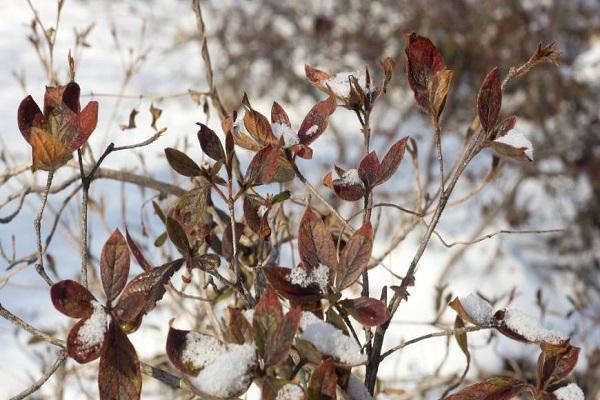
Bloom
With proper and timely care of the shrub, its flowering periods will occur twice a season.
When and how
The first period of active flowering of the shrub occurs in the spring. Depending on the regions in April or May. The second time the bush blooms at the end of summer and is in the active flowering phase for up to 4 weeks.
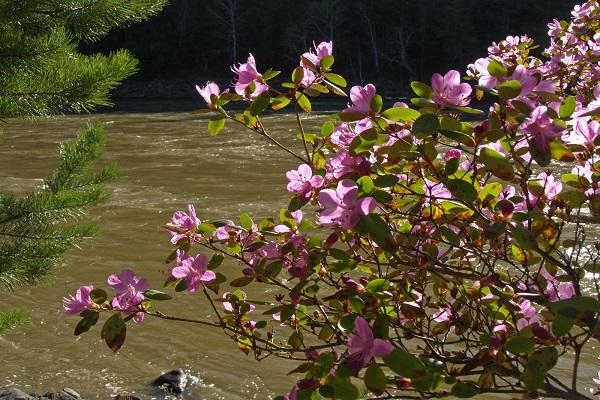
What to do before and after
Before the beginning of spring flowering, the shrub needs sanitary pruning. And during flowering, the plant needs sunlight and abundant irrigation procedures. After flowering, fallen leaves and buds are removed.
Solution of problems
If the shrub has not bloomed, then this means that after the last flowering period, the faded inflorescences were not cut off in time, because only by removing them, space is made available for the formation of new buds.

Diseases and pests
Rhododendron is susceptible to various diseases and insects.
Spider mite
The bushes are attacked by a spider mite, are carefully examined and treated with a solution of the fungicide preparation. The procedure is performed, if necessary, from 2 to 3 times, with an interval of 10 days.
Snails and slugs
Frequent guests of the plant are snails and slugs. The method of dealing with these pests is simple: they are collected by hand and then burned.
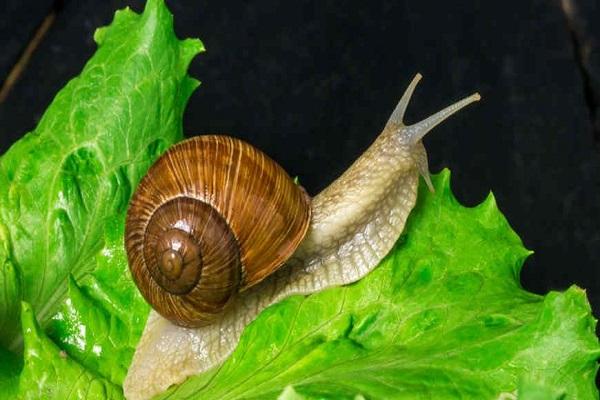
Mealybug, rhododendron bugs and flies
Having found pests on the shrub, the following measures must be taken:
- Inspect the plant carefully, and, if possible, collect all obvious pests.
- Spray the entire bush with special preparations of the insecticide group.
How to propagate
Ledebour's rhododendron reproduces in different ways:
- Seeds. To propagate a shrub in this way, you must have the experience and experience of a professional gardener.
- When propagated by cuttings, strong, viable plants are obtained, which, after aging in a greenhouse or at home, are planted in open ground.
- Layers. Adult bushes have many young shoots, which are buried in the ground in the spring and left there until autumn. At the end of the autumn period, the layers are dug up and cut off from the mother bush along with the formed root system. As a result, they get independent shrubs that can survive wintering in the open field.

Prevention of various problems
To prevent the plant from dying, preventive treatments with special preparations are carried out every spring and autumn. If the procedures are not carried out in a timely manner, then fungal and putrefactive diseases can destroy a beautiful, flowering bush.
For the prevention of fungal and putrefactive diseases, the bush is treated with Bordeaux liquid.
Important! Preventive treatments are carried out after the flowering period of the rhododendron.
Use in ornamental gardening
Compact bushes of Ledebour's rhododendron, planted in a personal plot or in a garden, will become the center of the floristic composition.

Medium-level flower arrangements
Rhododendron Ledebour is often used as a basis for creating alpine landscapes and slides. And in combination with small stones, the shrub will not only decorate the site, but also get a natural interior that is familiar to itself.
Groups of plants along the paths
If a group of plants is planted along paths or fences, then you get a hedge that will decorate the landscape of the infield.
Against the background of coniferous trees
Rhododendron bushes combined with conifers will create a vibrant composition. In this case, the shrub is planted in front of the trees. And during the period of active flowering of the shrub, the composition becomes the center of the garden plot.

Reviews
Irina. Moscow region:
Rhododendron Ledebour was planted 5 years ago. Every year it blooms more and more beautifully. Now she is preoccupied with breeding this miracle of nature.
Evgeny Nikolaevich. Yekaterinburg:
I bought the first seedling of this bush 7 years ago. I thought that it would not survive in our winters, but I was mistaken. Now I have the entire site planted with Ledebour's rhododendron. We admire beautiful flowers with the whole family twice a year.
Anna. St. Petersburg:
Last spring they planted this incredibly beautiful plant, the Ledebour rhododendron. Immediately after disembarkation, buds appeared with buds, but then for some reason they fell off. They wrapped him up for the winter and now we are waiting for what will happen in the spring.
